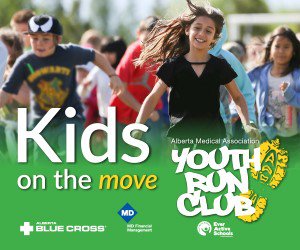PaRx, an initiative of the BC Parks Foundation, is Canada's first national evidence-based program designed to make prescribing time in nature easy and effective. PaRx was recently endorsed by the Alberta Medical Association along with a host of other notable organizations including the Saskatchewan Medical Association, BC Family Doctors, the Ontario Public Health Association and the Manitoba College of Family Physicians. It is in use by health providers across the country.
Why is it important to spend time in nature?
”I wonder if much that ails our society stems from the fact that we have allowed ourselves to be cut off from that love of, and from, the land. It is medicine for broken land and empty hearts."
So writes Potowatomi botanist Dr. Robin Wall Kimmerer in Braiding Sweetgrass: Indigenous Wisdom, Scientific Knowledge, and the Teachings of Plants. Although published in 2013, many of her essays, which explore Indigenous world views and the relationships between humans and nature, are especially relevant today.
As we write this article, the COVID-19 pandemic has dragged on for more than 18 months, leaving many people exhausted, burnt out and grieving.

It is also near impossible for us to ignore that we are suffering through a climate emergency, as evidenced by the devastating floods and mudslides in BC. In many cases, the affected communities are the same ones that were evacuated during one of the worst wildfire seasons on record. Indeed, climate change, a symptom of our disconnect from the natural world, has been cited as the greatest threat and opportunity of the 21st century for global health. The latest IPCC report further sounded the alarm of a “red alert for humanity” – a clear call to action for all of us as the window to make drastic change, that would ensure a healthy future, closes.
We need to ground our actions in the truth that our ecosystems are the foundation of our well-being. Nature prescriptions are one way that we, as physicians and allied health providers, can help foster understanding of these issues in our patients and our communities.
Most people have directly experienced the benefits of time spent in a natural environment. Whether we are hiking through a forest and enjoying the heat of the sun and the relief of a cool breeze, noticing the beauty of a tiny yellow flower clinging tenaciously to a rocky crevice high up on a snow-capped mountain peak, or simply sitting in the shade of a tree, we are likely all familiar with the moments of mindfulness, gratitude and awe that time in nature can bring.
What we feel intuitively is now being quantified and studied scientifically. A 2018 systematic review points toward an impressive, wide-ranging number of health benefits as a result of increased time in nature including improved blood pressure, lipid profiles, and cancer-related outcomes, as well as a reduced risk of asthma, type 2 diabetes, stroke and all-cause mortality. Research indicates that children who have mild to moderate attention deficits can experience memory and attention benefits from nature exposure that rival common pharmaceutical treatments. Just two hours a week spent in nature in at least 20-minute intervals can improve cardiovascular health, cognition and birth outcomes. People with access to green spaces and who live in areas with more tree canopy have better health outcomes than those who do not. Urban areas with limited green coverage become “heat islands” that trap heat and pollution. Low-income areas are disproportionately affected by these heat islands, which further exacerbates inequities of poverty and poor health. By incorporating green spaces into municipal policy for all areas, we can combat heat stress and social inequities.
For those of us who love to garden, a recent study found that exposure to a common soil bacterium, Mycobacterium vaccae, can improve symptoms of anxiety and depression through its interaction with the immune system. Researchers hypothesized that injections of M. vaccae might boost immune system responses in cancer patients. Unfortunately, the injections did not affect survival, but patients who received the injections did report significantly improved quality of life. Whether it's due to exposure to bacteria in the soil or other factors, it is estimated that the global mental health benefits associated with access to protected nature areas total over $6 trillion dollars annually.
Knowing that adherence to health advice is increased by providing written prescriptions, the PaRx program provides issue-specific and evidence-based templates that can be printed out for patients. The prescriptions can be individualized by mapping their home address or work place and pointing them to walkable, bike-able or transit-accessible green spaces nearby.
In addition to giving prescribers the opportunity to start a conversation about the benefits of nature with their patients, the PaRx program also challenges us to consider our responsibility to give back to the life-sustaining natural world around us. Not surprisingly, research indicates that time spent in nature motivates both children and adults to protect and advocate for the environment.
"One of our responsibilities as human people is to find ways to enter into reciprocity with the more-than-human world," Robin Kimmerer also writes in her essay The Honorable Harvest. She notes, "We can do it through gratitude, through ceremony, through land stewardship, science, art, and in everyday acts of practical reverence."
The Park Prescriptions program comes at a time when we are being invited to reflect deeply on our relationship with the world around us. We know that the earth systems that sustain us are reaching untenable limits. If we can expand these conversations and engage our personal networks and professional and political representatives, we can perhaps begin to move once again towards a world view that includes humans as a part of nature rather than apart from nature. Our survival depends on it.
For more details regarding the PaRx program and for resources including patient handouts and tips, please visit www.parkprescriptions.ca.
Banner image credit: Pixabay.com


